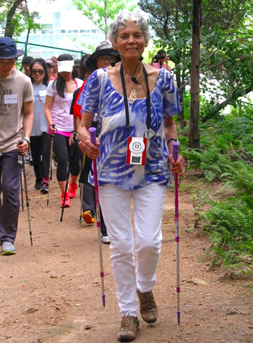
|

|
|
|
|
Ruthy Alon
FMI Founder and President
|
Incorporated in the state of Maine in 2007, the Foundation for Movement Intelligence is a non-profit 501(c)(3) educational organization dedicated to promoting the world’s best movement practices in the service of osteoporosis prevention and reversal.
Our current Board Members are:
Doug Boltson, Treasurer
Anna Hatrecht, Secretary
Tancha McKnight
Mary Jo Healey
Elinor Silverstein
Janeen Pirosko
Cate Thomas
Past members: Karen Chwe,
Kelly Feder, Gail French,
Linda Howell, Gretchen Langner, Hélène Lévesque, Carol Lingman,
Deborah
Lotus, Richard Rogers,
Cici Runge, Jileen Russell,
Marcia Schoppik, Tyr Throne, Cathy Wright and Sheila Zangara
FMI oversees activities of the North American instructors of Bones for Life® in the U.S. and Canada. We are a proud member of ISMETA — the International Somatic Movement Education & Therapy Association.
|
2009 Audio Interview
2009 TV Interview
2008 Interview
2008 Audio
2005 Interview
2002 Interview
1992 Interview
Interview
Narrative
FMI Bylaws &
Ammendments
Conflict of Interest Policy
Conflict of Interest Summary
Financial Statements
BFL Ethics
Statement
|
|

|

|

|

|

|
Perfectly Upright . . . On
“All Fours”
Walk for Life is a new program in optimal gait dynamics that helps participants learn to walk “the way Nature meant.” Developed by Ruthy Alon, creator of Bones for Life® and founder of the Foundation for Movement Intelligence, this program is based on Ms. Alon’s prior work and 40+ years’ international experience as a Senior Trainer of the Feldenkrais Method of movement re-education.
In this program the use of walking poles not
only helps us to maintain equilibrium, but also redistributes effort, reviving our arms’ primal function — like the front legs of quadrupeds —
to produce pressurized impacts into the ground.
The resulting counter-force
from this pressure [aka GRF, or ground reaction force] thrusts our shoulder blades back toward the vertebrae, helping to restore flexibility in this often stiff, non-negotiable
area of our dorsal spine.

|

|

|

|

|

|
Pole usage when walking also increases our vitality,
since the non-habitual interaction of the arms with the ground (through their extension via the poles) employs a long lever that boosts the ballistic force we employ
for propulsion.
In format, the Walk for Life program consists of experiential indoor movement lessons to convey simple-yet-potent strategies that effect beneficial long-term change in flexibility, coordination, posture, strength and well-being.
It also incorporates a real-world outdoor component — walking in nature using Nordic poles — to help participants integrate patterns characteristic of a lively, pleasurable and health-promoting walk into their daily lives. Factors covered include optimal alignment, coordination, pace, propulsion, timing and impact.
Improvements in balance and gait have been validated by the University of New Hampshire’s Department of Kinesiology.
“Walk for Life participants
improved their walking speed,
step length, and time spent on
each leg during walking.
They also experienced an
improvement in their overall
balance confidence.”
— Erik E Swartz, PhD, ATC, FNATA
Associate Professor, Clinical Coordinator
Athletic Training Education Program
University of New Hampshire
Online Abstract
|

|

|